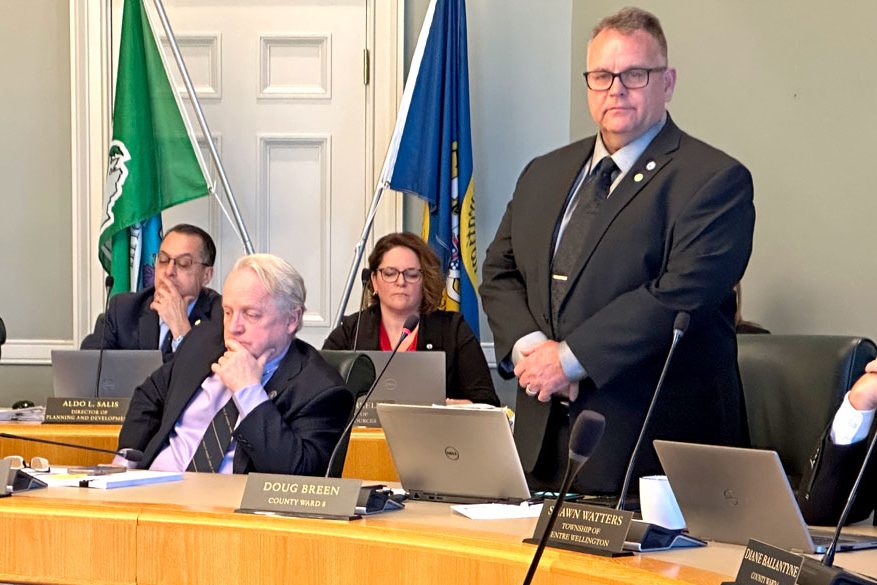WELLINGTON COUNTY – The combined Ontario Community Infrastructure Fund (OCIF) allocation for Wellington County and its member municipalities will fall by more than $730,000 next year.
Four of seven local municipalities will see a decrease and the County of Wellington itself will see its allocation fall by nearly half a million dollars from its 2023 allotment.
The county and its seven member municipalities will receive a combined $10,911,424 in 2024, down $734,422 from $11,945,846 in 2023.
The County of Wellington will receive $2,764,871 in 2024, a reduction of $487,918, or 15 per cent from $3,252,789 the previous year.
The 2024 allocation marks only the second time the county has received an OCIF decrease since the program was initiated in 2015.
The county’s allocation fell for the first time in 2023, when it received $506,679 less than in 2022.
County treasurer Ken DeHart said the decrease will definitely impact the 2024 budget process.
“Unfortunately, they did not let us know of this reduction until December, so the decrease had not been factored into the budgeting so far and will result in an increase to the property tax levy when we next present the budget to county council in January,” DeHart stated in an email to the Advertiser.
At the Nov. 30 meeting, staff presented council with a draft budget including a 4.8% tax levy increase for 2024.
The levy increase was reduced from a 5.3% hike projected in an earlier version of the budget, thanks largely to the planned removal of a $1.6 million rural broadband capital project.
DeHart said further declines in OCIF funding are anticipated over the next few years.
“We were able to forecast future allocations utilizing the formula that was provided and as long as the formula remains consistent with what they presented us this year, then our 2025 to 2027 allocations will decrease as well, said DeHart.
The county is currently projecting OCIF decreases of 15% in 2025 and 2026, and a reduction of 4.5% in 2027.
Among lower tier municipalities:
- Centre Wellington will receive $2,537,662 in 2024, down from $2,985,485 in 2023;
- Erin will receive $393,324, down from $466,263;
- Guelph/Eramosa’s allocation is $663,973, down from $781,145;
- Puslinch will receive $438,094, up from $380,951;
- Wellington North will receive $1,682,295, down from $1,944,252;
- Mapleton has been allocated $1,140,309, up from $991,573; and
- Minto will receive $1,314,896, up from $1,143,388.
OCIF supports local infrastructure projects for communities with populations under 100,000, along with all rural and northern communities.
Municipalities may accumulate funding for up to five years to address larger infrastructure projects.
Mapleton Mayor Gregg Davidson, whose municipality was among those to receive an increase for 2024, said the township appreciates the OCIF funding and uses it to reduce its infrastructure deficit.
“The extra funding this year will get us one step closer to upgrading our wastewater capacity so we can support new home growth,” he stated in a Dec. 14 press release issued by Perth-Wellington MPP Matthew Rae’s office.
“Our government is working with our rural and small communities to build critical infrastructure such as roads, water and wastewater, and bridges,” said Rae whose riding received $14,468,702 in funding from the $400 million province-wide OCIF allocation.
“We are ensuring our municipal partners can count on provincial infrastructure funding, allowing them to undertake necessary projects, while reducing the impact on their budgets,” the MPP added.
Infrastructure minister Kinga Surma stated, “Small, rural and northern communities need stable funding for their unique infrastructure needs and to provide safe and reliable services.
“That’s why our government continues to provide funding, especially during these challenging economic times.
“Our investments in community infrastructure are helping to create jobs, build stronger local economies, and lay the foundation for a stronger, more resilient Ontario for generations to come.”




